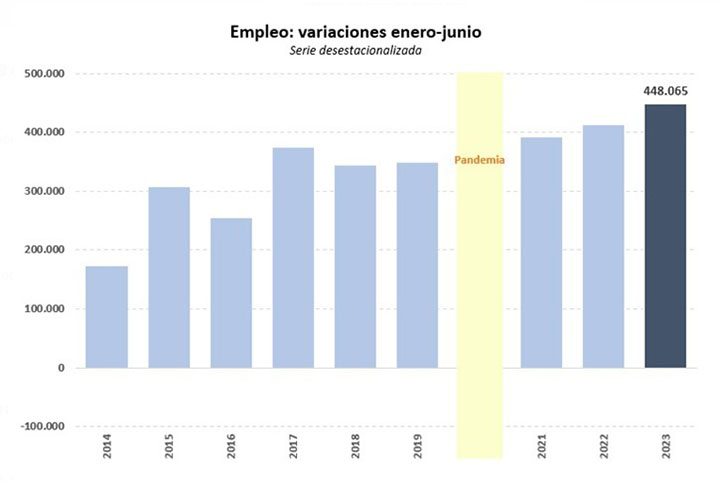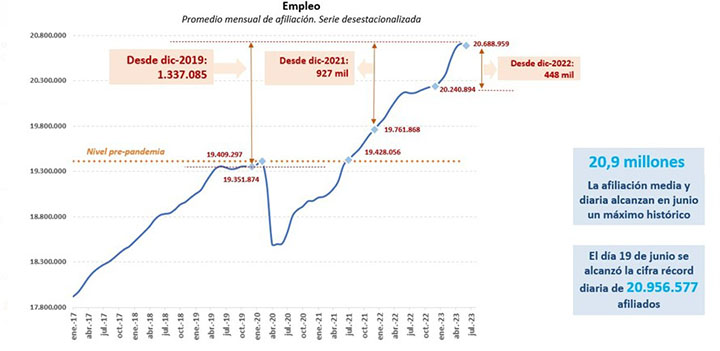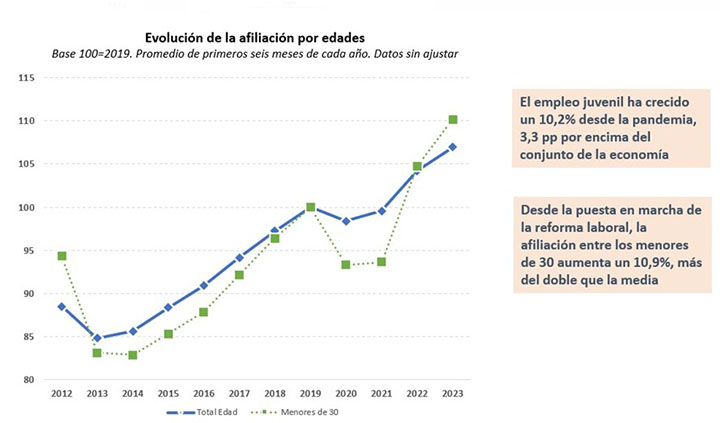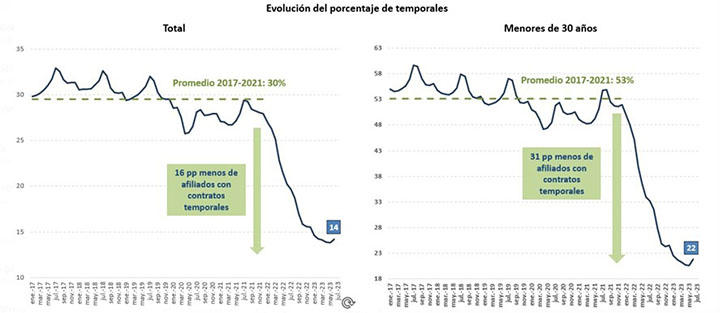In June, the number of national insurance contributors stood at 20,688,959 workers, discounting seasonality and the calendar effect. A total of 448,065 jobs were created in the first six months of the year, completing the best January-June period in the historical series. This job creation figure is comparable to that for the whole of 2022, which was a year of great dynamism in the labour market and the second best six-month period in the series, only surpassed by the July-December 2020 period, which was strongly affected by the pandemic.

The daily series of contributors exceeded 20.9 million workers for the first time, specifically between the 12th and the 21st of June. The all-time high was reached on the 19th, when 20,956,577 people were employed in Spain. In average terms, the figure stood at 20,869,940 in June, the highest level in the series, 54,541 more employed people than in May, with a month-on-month increase of 0.26%. In year-on-year terms, growth stands at 2.56%, with 521,610 more contributors than a year ago. In seasonally adjusted terms, the number of new national insurance contributors fell by 20,119 people compared to the figure for May.

Employment in innovative activities remains buoyant
Compared to the pre-pandemic level (February 2020), the number of contributors has grown by more than 1.3 million people in adjusted terms, of which three out of four are in the private sector. Employment growth compared to before the pandemic is especially notable in high value-added sectors, such as Information Technology and Telecommunications, where the number of employees has grown by 22.7% compared to before the pandemic, and Professional, Scientific and Technical Activities, which grew by 13.3%. Since the end of the pandemic, one in four new contributors (almost 272,000 in absolute terms) has joined these highly productive sectors.
Employment growth among young people is also higher than the labour market average, standing at 10.2% since 2019 compared to an average of 6.9%. Women's employment is also more dynamic than in 2019. Specifically, it has increased by 8.6%, three points more than the figure of men, reaching 9.826 million employed women in June, the highest figure in the historical series.

86% with permanent employment
In June, the percentage of temporary contract workers remained at an all-time low of 14%, less than half the figure prior to the labour reform (30%).

In the case of those under 30 years old, temporary employment has gone down by 31 points with respect to its pre-reform level, from 53% to 22%.
Overall, there are now 3 million more contributors on permanent contracts than in December 2021, the last month before the reform came into force. Another indicator of greater stability is the increase in the average length of contracts that have been terminated. Between January and May this year, the average increased by 29% compared to the same period in 2019, the last comparable year prior to the impact of the pandemic.
Furthermore, the number of workers on ERTEs (temporary regulation of employment) remains at minimum levels, at around 12,000 people, 0.1% of all contributors.
Improved social security revenue
The strong dynamism of the labour market is helping to strengthen the sustainability of the pension system, with revenues from social security contributions growing by 9.7% up to April. Discounting the revenue effect of the Intergenerational Equity Mechanism (IEM), which started to be implemented in January 2023, contributions are growing at a rate of 8.1%, a higher rate than in previous years. Last, the improvement in employment brings the ratio of contributors to pensioners to 2.39, at a decade high.
Non official translation





